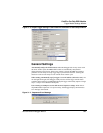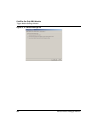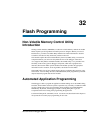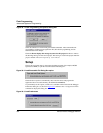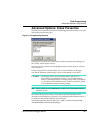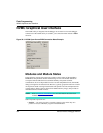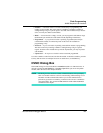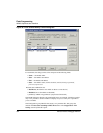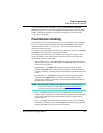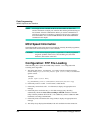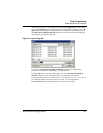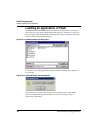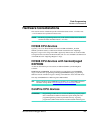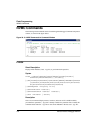
Flash Programming
NVMC Graphical User Interface
703
Microcontrollers Debugger Manual
• Disabled — A disabled module is not active on the chip, so programming and
reading are not possible. The usual control for enabling or disabling a module is
setting/clearing a flag in a special register. Note that a few modules always must be
active. You may not disable such modules.
• Blank — A blank module is empty of code: you can program its full address range.
(Each blank byte contains the value 0xFF or 0x00, depending on hardware.)
• Programmed — A programmed module is partially programmed (not all bytes
contain 0xFF or 0x00). You must keep track of the areas still available for
programming, if any.
• Protected — A protected module is partially protected from erasure or programming.
The usual control for protecting a module is setting/clearing a flag in a special
register. Note that a few modules always must be unprotected; you may not protect
such modules.
• Unprotected — An unprotected module can be erased and programmed.
To select a module or other list item, left-click the module. To deselect a module, press the
Ctrl key and left-click. For multiple selections or deselections, use the Shift key.
NVMC Dialog Box
The NVMC dialog box lists all the Flash or EEPROM modules of a CPU derivative. A
derivative such as the MC9S08RC16 or the MCF51QE128 has just one on-chip Flash
module; other derivatives have multiple modules.
NOTE The dialog box does not have a Select or Deselect button, since you simply
click on a module in the list to select it. But selecting and deselecting are not
automatic from the command line. Before you use the command line to
perform any operation on a module, you must use the SELECT command to
select the module. Also see the FLASH SELECT and FLASH UNSELECT
commands in this chapter.



